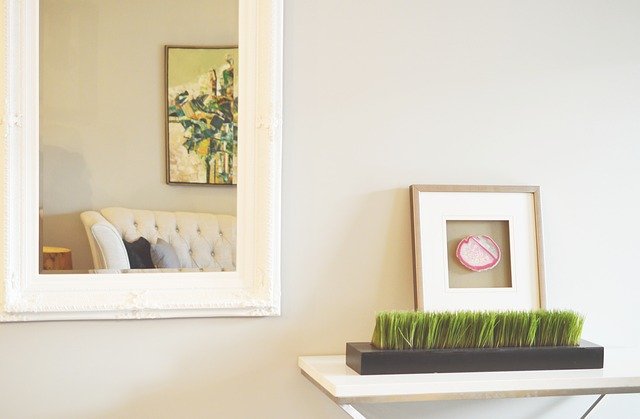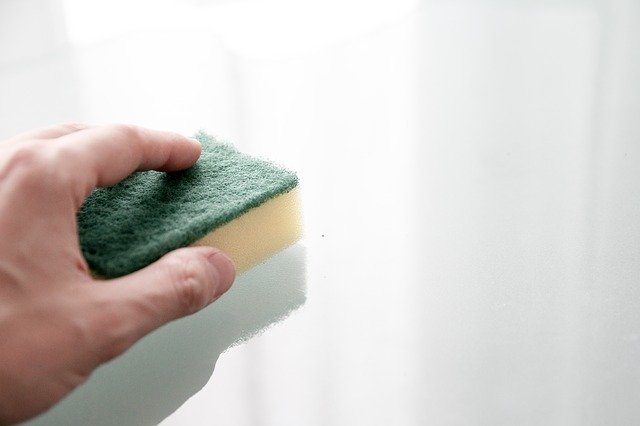
There are a lot of reasons you might want to do a deep clean of your home. You might be planning to move and you want the place to look spick-and-span for potential buyers. You might know that consistent cleaning is great for your health and want to spruce up the place for your own benefit. No matter what the reason, if you want to do a proper job, you’re going to need to clean your walls and ceilings.
Cleaning Your Walls
Cleaning your walls is the easy part; the ceiling is where things get a little tricky. First, you’ll have to do a bit of setup – remove everything from your walls: mirrors, pictures, posters, you name it. You’ll also want to move any furniture far from your walls to give ample space for cleaning. Any nails in the walls should be covered in masking tape so you don’t hurt yourself while washing them.
You’re going to need to dust off your walls before you start to wash them, or else you’ll end up with watery, dusty clumps everywhere. There are a couple of ways you can do this: use a good, old-fashioned, feather duster, a Swiffer, or a dust brush attachment on your vacuum. Be sure to have a stool handy so you can reach the higher parts of your wall.
Consider the Paint Before Using Any Detergents
Let’s take a second to talk about paint. Paint comes in a variety of finishes, from high-gloss to flat. The glossier your paint, the better it will stand up to washing. Very flat paint will come off pretty easily, so you’ll need to be especially careful – any marks on your wall might need to stay where they are because scrubbing flat paint can make it come right off!

You might not be sure exactly what kind of paint you have; that’s okay. What you’re going to do is wash your walls in steps. First, lay towels down near your baseboards; this will help keep your floor dry from any drips coming off your walls. Now, dip a sponge in some water; no cleaning solution necessary yet. Opt for a natural sea sponge if you have access to one. Run the wet sponge along your wall, and see if it starts taking off any stains or marks. You want to start with water in order to ensure you don’t damage the paint. If stains aren’t coming off, and the paint seems like it’s holding up, you can add liquid detergent to your water. Avoid using stronger cleaners if you can.
You’ll want to be particularly careful around electrical outlets; water and electricity don’t mix. Make sure you’ve unplugged everything from your outlets, and make sure your sponge is wrung dry before wiping around the outlets.
When there are marks on your wall that can’t be removed using the method outlined above, you may need to repaint.
Cleaning Your Ceiling
Before we get into cleaning your ceiling, a quick warning: cleaning your ceiling can be dangerous. We’re not just talking about falling off the ladder dangerous, either! Some ceilings, especially those built between the ‘50s and ‘80s, can contain asbestos. This is particularly true of so-called popcorn (or stucco) ceilings. Should you believe that your ceiling contains asbestos, it’s best not to clean it at all. If you must clean it, have it done by a professional.
Most ceilings do not stand up well to water. They’re made of either plaster or stucco, and both of these materials can absorb water quite readily. This can lead to sagging and water stains. Your best bet is to simply dust your ceiling cautiously with a feather duster. Again, if you have a stucco ceiling, you should be very careful even doing this – asbestos is very dangerous when it’s disturbed.
Ceilings that are able to withstand water should be cleaned in much the same way as walls. Start with a sponge that is very lightly dampened with water, and test it out on your ceiling. Should the water alone not be enough, and if your ceiling can stand it, add a little detergent to the water. Be careful when you’re up on that ladder, and make sure to turn off any fans; you don’t want to get hurt!

Some Quick Tips on Wall and Ceiling Cleaning
- In case this hasn’t been emphasized enough: be very cautious with how much water you use and don’t stay on any one section for too long. Water damage on your walls or ceiling can, unsurprisingly, cannot be removed by cleaning with water!
- Ceilings can be quite prone to water damage; sometimes, you’ll see it in the form of yellow streaks. These can be removed (carefully!) with a mixture of one part bleach to five parts water. The same rules apply – wipe gently, and don’t oversaturate your sponge. You should wear protective goggles and gloves when using bleach.
- If your walls are wallpapered, a lot of the things we’ve described may not apply. Vinyl wallpaper can be washed in the way we described, but paper wallpaper doesn’t stand up particularly well to water.
- You can use a soft-bristled broom to dust off your ceiling and remove cobwebs if you feel a bit leery about getting up on a ladder.
A reminder: Don’t do this if you have popcorn ceilings. The textured elements will start cascading down, and you might be disturbing asbestos.
Consider wearing a hat to stop any of the debris from falling on your head!
Companies like Globe Property Management recommend you clean your apartment thoroughly before moving. This can help you get your damage deposit back. You might feel a bit intimidated by the whole process; remember there’s always professional cleaning help available in each country if you don’t feel confident enough you can clean your whole place yourself.
Tags: Ceiling cleaning, Cleaning walls, Home improvement, Move out cleaning





